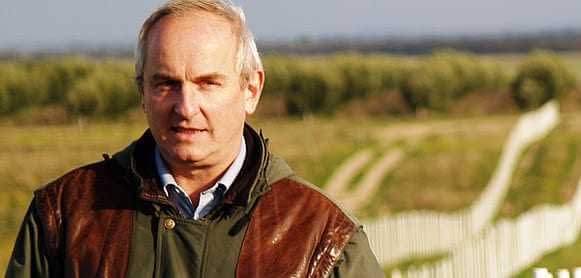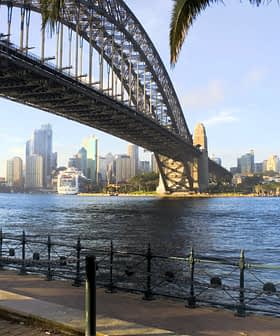
Paul Miller
Australian Olive Association President Paul Miller stopped earlier this month to ask directions in rural Georgia (U.S.). He was to look for a white church, he said in a Twitter update (presumably not sent while driving). What he didn’t say was what he was doing there in the first place, some 16,000 kilometers from his base in Melbourne.
It was just one stop on a long road for the well-known olive oil industry veteran leading to nothing less than a new way for producers, retailers and consumers to determine the real value of extra virgin olive oil.
Miller is worried about the survival of the olive oil industry. “If the pendulum doesn’t swing,” he told Olive Oil Times , “we might as well give up. It’s straining everyone.” Even the giant cooperatives are finding that this “race to the bottom” is not doing anyone any good, he said.
The fix for it all, Miller believes, is illustrated by the current, unlikely climb in prices for Italian olive oil at a time when other European producers are receiving government aid for keeping their product in storage tanks — unable to sell their olive oil for what it cost to produce. The prices for Italian olive oil is soaring on the other hand, Miller said, because it is, in fact, Italian olive oil.
With several recent high-profile prosecutions and Italy’s highly trained forestry service now scrutinizing just about every liter that comes in and goes out of Italy, there’s suddenly a lot less Italian olive oil to go around. So the olive oil that Italy really does produce is commanding a premium.
Miller wants to do the same for extra virgin olive oil itself. “If we can get it so what is genuine extra virgin, is traded as such and what isn’t, isn’t — it would just transform the industry. That’s what we’re doing here, and that’s what the Australian standard is all about.”
It wouldn’t be a new notion except that Miller said that, for the first time, we have the tools to pinpoint the true identity of olive oil — not just when it’s fresh, but at any time during its shelf life. “We’re at the point where we now can accurately describe the life of extra virgin olive knowing the free fatty acids at the beginning and then describing what the life is and will be,” he said, by using a series of tests including the 1,2‑diacylglycerol (DAGs) and pyropheophytins (PPP).
Those methods were discussed at last week’s Australian Olive Association annual meeting, a conference with an international attendance and an agenda that reached well beyond Oceania — in fact, all the way to rural Georgia.
Miller described “startlingly complete work” presented at the meeting by Claudia Guillaume from Modern Olives and Rod Mailer from the Australian Oils Research Laboratory based on methods developed by Dr. Christian Gertz and others. Using a series of tests and data from their extensive reasearch, Miller claimed we can now determine with acceptable accuracy the profile of an extra virgin olive oil throughout its useful life. “A retailer armed with the tools can take a bottle off the shelf and check what it should be,” he said.
Miller envisions something like the grades often attributed to wines, only less subjective. “Now that we know about the life of oil and that’s a measureable condition, why not communicate that to the consumer?” he asked. While standards like Australia’s, the USDA’s, Codex Alimentarius and the International Olive Council’s serve the governments who adopt them well, Miller said they don’t do enough for the consumer. There’s an opportunity to have a good trade document that buyers and sellers will be comfortable with that relates to the end result.
So Armed with what he called that “complete story” Miller and his colleagues rounded up like-minded industry players from the the United States including the Olive Center’s Dan Flynn and representatives form the California Olive Oil Council “to have a bit of a forum to see if we needed a group to pursue these objectives and form a world olive oil quality alliance, effectively connecting producers and consumers.”
The group was also joined by Manuel Paras Rosa, the rector of the University of Jaén. Dr. Rosa, who Miller called a “guru on consumer attitudes” about olive oil, and the “go-to man for the European Commission,” supported the new Australian standard — a position perhaps not too popular in Andalusian olive oil circles. There was a pledge of cooperation between the University Rosa heads, the University of California at Davis Olive Center and the Australian Olive Association.
The American Oil Chemists’ Society will be the body to conduct proficiency testing and serve the technical and scientific part of the new alliance, according to Miller, whose members at this embryonic stage are the California Olive Oil Association, Georgia Olive Growers Association, the Australian Olive Association and South Africa Olive Industry Association.
What about the established “Old World” olive oil producing countries? Miller said he imagined some of the producers there would be very interested in the initiative. “It’s not a them-and-us operation,” he said, but neither could he resist admitting that “to some degree this was driven by some frustration because of how the old world is and its dominance in the industry.”
When asked about the Association 3E and its efforts to introduce a super-premium olive oil designation and develop a common language of olive oil quality, Miller said, “They had a go at it and it doesn’t seem to be necessarily going anywhere. The general view of our group is that we don’t need ultra-premium, we just need extra virgin. Why would you try to create something new when extra virgin has such a good brand value out there? All we need is (extra virgin) to be what it is.”
It’s been quite a few months and Miller sighed when asked about what the rest of the year had in store for him and the initiative he has agreed to lead. He will be consulting with Bruce Golino in the U.S., Andries Rabie in South Africa and Leandro Ravetti about reaching out in South America with the aim of signing off on the alliance early in the new year.





